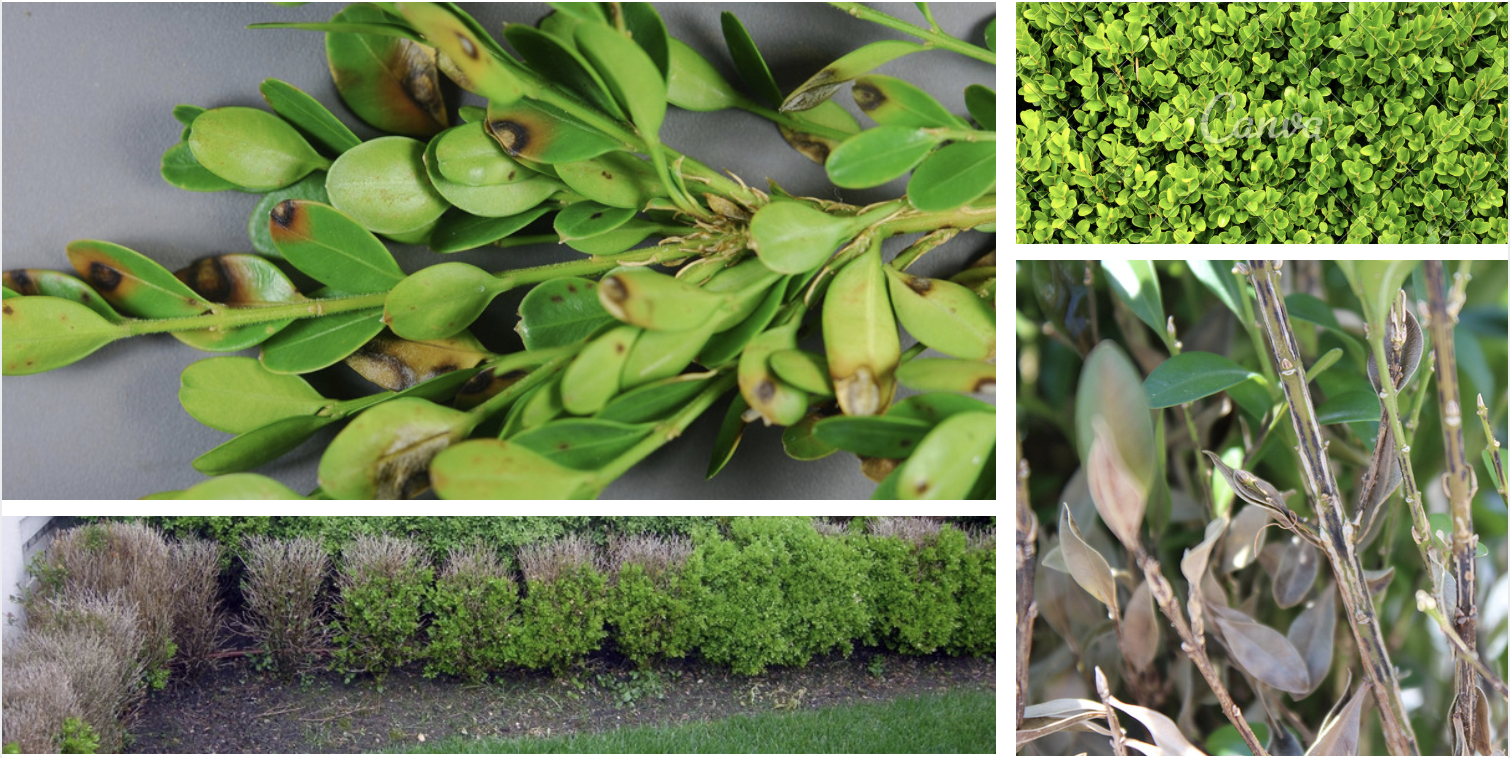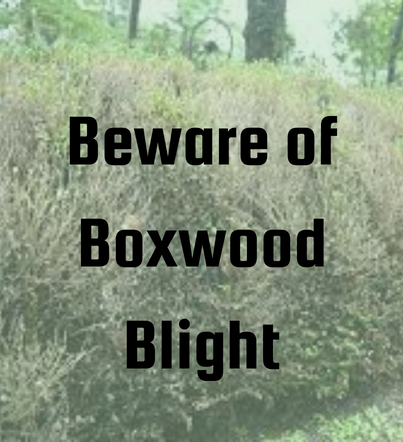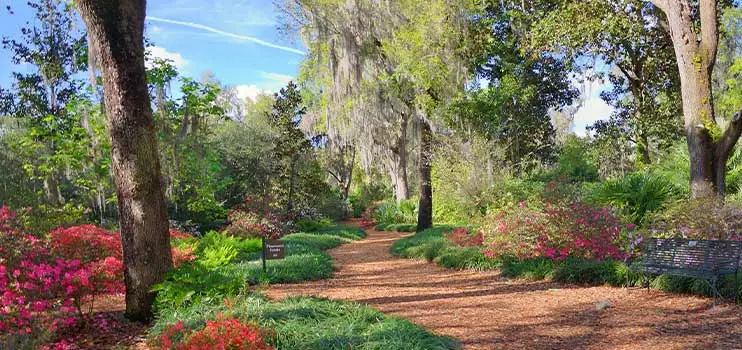
Boxwood Blight is a very concerning disease that was first discovered in the United States in 2011. How it came to arrive here, and where the pathogen originally came from is unknown. It has recently been discovered in Downstate NY, Long Island and Connecticut.
Every species of Buxux is at risk of this disease, while some have proven to be more susceptible than others. Signs of Boxwood Blight include lesions or dark streaking on the stems, brown spotting on the leaves, and defoliation (leaves falling off the branches). Interestingly, the disease infects all aboveground portions of the boxwood, leaving the roots intact.
The Boxwood Blight has a very rapid disease cycle that grows fastest in humid environments at a temperature of 77 degrees Fahrenheit. The worst thing about this disease is how easily the pathogen can travel from one host to the next. Gardeners can transmit the disease between properties by not properly sanitizing their shears, it can even travel on your clothes from one property to the next.
If you recognize the warning signs of Boxwood Blight, act fast, it’s only a matter of time before your whole hedge will be infected. Without early detection and management, the result is often death of the plant.
The bad news is, there is no current cure for Boxwood Blight, if discovered, you should have a plant health care specialist inspect to see if the disease can be managed with fungicide treatments or if removal is the only option. If removal is the recommended course, it is very important to have a professional handle this, as to prevent it from contaminating other plants during removal and transport.
If you have boxwoods on your property, we encourage you to follow these preventative measures:
- If you have boxwoods, treat them according to the guidelines below. If you don't have them, DO NOT ADD THEM TO YOUR GARDEN. The risk associate with boxwood blight is just too high, it's best to stay clear of boxwoods.
- Allow an adequate amount of space between each plant to provide enough air circulation.
- Avoid overwatering, because a humid atmosphere and water droplets are key to the disease’s growth.
- Be extremely diligent about sanitizing shears, rakes, gloves etc., that may have been exposed to the pathogen.
- Inspect your plants often, early detection is crucial in managing the spread and keeping your lovely hedges alive.
- Hire Emerald to do fungicide applications on your boxwoods each year.










